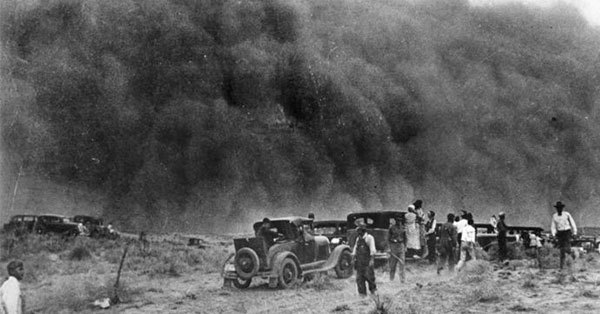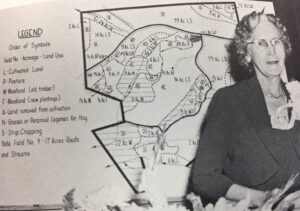ABOUT US
Across the United States, there are 3,000 conservation districts working to protect and sustain soil, water, forests, wildlife, air and other natural resources.
The Greenville County Soil & Water Conservation District has the ultimate goal of saving the soil and water for future generations of South Carolinians. We rely on volunteers to install best management practices on the land and to become educated about the importance of taking care of these natural resources.
Five unpaid commissioners, three elected in the general election and two appointed by the state, meet monthly to guide the staff in following action plans for promoting conservation through on the ground projects and educational programs. These meetings are open to the public.
We coordinate assistance from Greenville County and the federal government, through the USDA Natural Resources Conservation Service, to assist farmers, urban residents, teachers, students, concerned citizens and other agricultural agencies to protect natural resources.
The Greenville County Soil & Water Conservation District is a unit of state government which receives funding from County Council and the SC Department of Natural Resources to conduct programs.
OUR MISSION
Our mission is to protect natural resources through education, programs, and cooperative efforts with partner organizations to achieve common goals for the benefit of all citizens of Greenville County with efforts in promoting:
Urban and Land Use Planning
Conservation Awareness
Sustainable Agriculture
Did you know?
GCSWCD shares unique ties to Roper Mountain Science Center. In the early 1980s Mr. John Parris, Director of the SC Land Resources Commission, was asked to find a government entity to take ownership of the state owned Roper Mountain property near Greenville. He called Jim Bennett who was serving as chair of the Greenville Conservation District and the Greenville County School District at that time and asked him if he was interested in having Roper Mountain for the development of an Environmental Science Center. The state officials who asked him to find a new owner for the property did not specify any required use of the property, but Mr. Parris thought it would be great for an educational laboratory. Mr. Bennett immediately called Dr. Floyd Hall, superintendent of the county school district, and within a few hours, they informed Mr. Parris they would be happy to accept the property and received it for one dollar at a deed transfer ceremony in Columbia. The school district appointed an advisory committee to develop plans for the center and to raise private funds to assist in its development and the center opened in 1985.
In the mid-1980s, Mr. Parris nominated the Greenville Conservation District for the first Conservation Education Award presented by the National Association of Conservation Districts. The conservation board received a check for $1500 as part of the award and donated it to the school district to pay for the first entrance sign to the Science Center. Darrell Harrison, who served as the original Executive Director, also served as a SWCD Commissioner for many years.
HISTORY OF CONSERVATION DISTRICTS

In the early 1930s, along with the greatest depression this nation ever experienced, came an equally unparalleled ecological disaster known as the Dust Bowl. Following a severe and sustained drought in the Great Plains, the region’s soil began to erode and blow away, creating huge black dust storms that blotted out the sun and swallowed the countryside. Thousands of “dust refugees” left the black fog to seek better lives.
These storms soon stretched across the nation. They reached south to Texas and east to New York. In these years before air conditioning, dust sifted into the White House and onto the desk of President Franklin Roosevelt. On Capitol Hill, while testifying about the erosion problem, soil scientist Hugh Hammond Bennett threw back the curtains to reveal a sky blackened by dust. Congress unanimously passed legislation declaring soil and water conservation a national policy and priority. Since about three-fourths of the continental United States is privately owned, Congress realized that only active, voluntary support from landowners would guarantee the success of conservation work on private land.
In 1937, President Roosevelt wrote the governors of all the states recommending legislation that would allow local landowners to form soil conservation districts. South Carolina’s Governor, Olin D. Johnston signed the S.C. Conservation Districts Law on April 17, 1937.

In 1938, the Greenville County Soil & Water Board of Supervisors met for the first time and the district was chartered in 1939. In their Annual Report to the County in July 1940, J.L. Lindsey, Chairman wrote, “The attitude of the farmers towards soil and water conservation is good, but they do not fully understand it. There is a need to hold meetings to teach the people the value of conserving the soil. Those who do not know about the programs should be educated. Many farmers are slow to take on to new things, but once they are made to see the value, they are glad to go along with it.”
The S.C. conservation districts law established the working partnership between the United States Secretary of Agriculture, the State of South Carolina, the S.C. Department of Natural Resources, and each conservation district in South Carolina.
With a five million dollar budget, the federal Soil Erosion Service set up demonstration sites in strategic locations throughout the United States. One of the first demonstration sites in the United States covered the South Tyger River Watershed, located in Greenville and Spartanburg counties. The project began on December 18, 1933 at the J.L. Berry farm, located near Poplar Springs in Spartanburg County where a gully, large enough to swallow a vehicle, was repaired.
Over the more than seventy five years of the Greenville Soil & Water Conservation District’s existence, the goals remain the same: to install best management practices to stop soil erosion and maintain good water quality and to educate the public about the importance of both.

